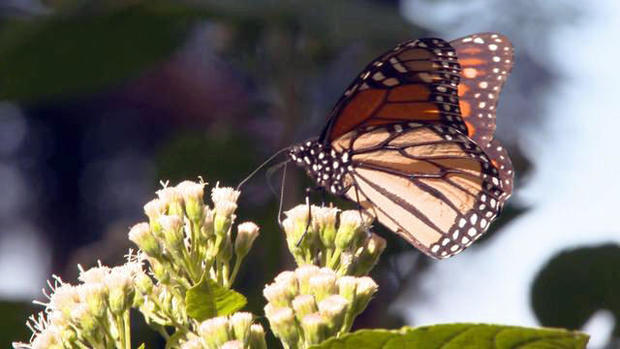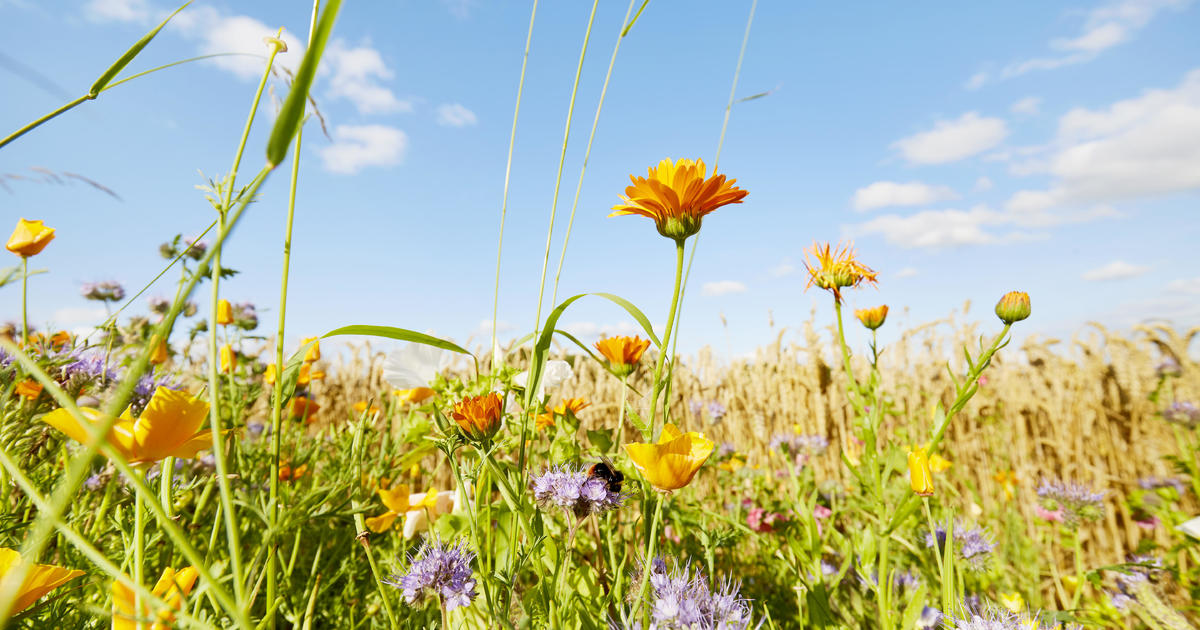Monarch butterflies are thriving this year but it could be the last
A hundred miles from Mexico City, 9,000 feet above sea level, you'll find what at first seems to be nothing at all. But if you look closer, the trees forest are dripping with monarchs – millions huddled for warmth until the sun hits, when one by one they fly.
Eduardo Rendón directs the World Wildlife Fund's monarch butterfly program in Mexico. Inside the country's butterfly reserve, scientists measure the monarchs by area. Fifteen acres of coverage this year is the largest population in more than a decade, up 144 percent over last year.
Tierra Curry, a senior scientist with the Center for Biological Diversity, made a special trip to see the monarchs this year.
"I am scared that this is the last big bumper year," Curry told CBS News' Tony Dokoupil. "'Cause this year's because of perfect weather last year. It was, like, a Cinderella weather. Everything that could go right did. So this is the most monarchs that we may see for a while."
To appreciate the sheer scale of this year's migration, Rendon allowed Dokoupil into a restricted area of the reserve, a clearing where monarchs filled the air like confetti.
The monarchs we saw were likely on their way to America that very day, Rendon believes. By late March the species had been sighted in a dozen states as far north as Oklahoma.
Later this spring and summer, three generations of monarchs should blanket the entire United States east of the Rockies. Then in mid-August a special super-generation will fly all the way back to Mexico to these very same mountains. That means the butterflies they saw are the great-great-grandchildren of the butterflies that were there last winter.
Just a few years ago, Rendon worried he might be seeing the last generation because between 1994 and 2016, this eastern monarch population plunged more than 80 percent and a federal review found "a substantial probability" of collapse in the next two decades.
Curry authored the petition to protect the monarch as a federally endangered species. She called this year's strong population "a fluke due to weather." The monarch has been pushed to the brink of extinction by habitat loss, according to Curry. She fears climate change could finish the job.
"In the United States, monarchs are threatened by climate change because of more severe storms when they're migrating in the spring and in the fall," she said.
The bigger storms, she said, "Blow them out of the air. Disrupt the migration. Cause them to get stuck in places. Or, if it's too warm, then they stay north too long and then it gets cold and then they die."
In fact, an estimated 40 percent of all insect species are in decline, a die-off that threatens an animal much higher on the food chain: humans.
"Our presence on the planet is dependent on their presence on the planet?" Dokoupil asked. "Exactly," Rendon replied. "That is my point."




